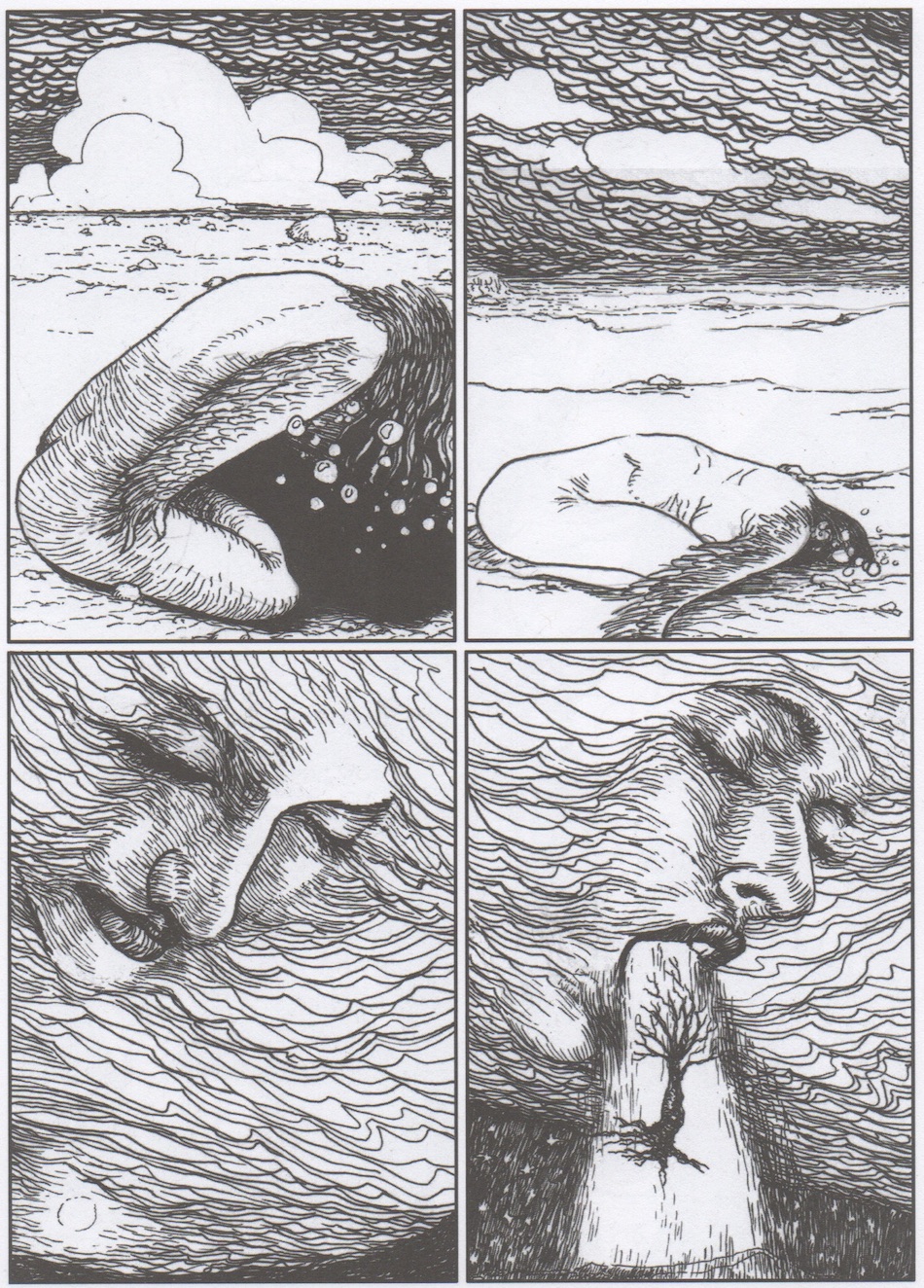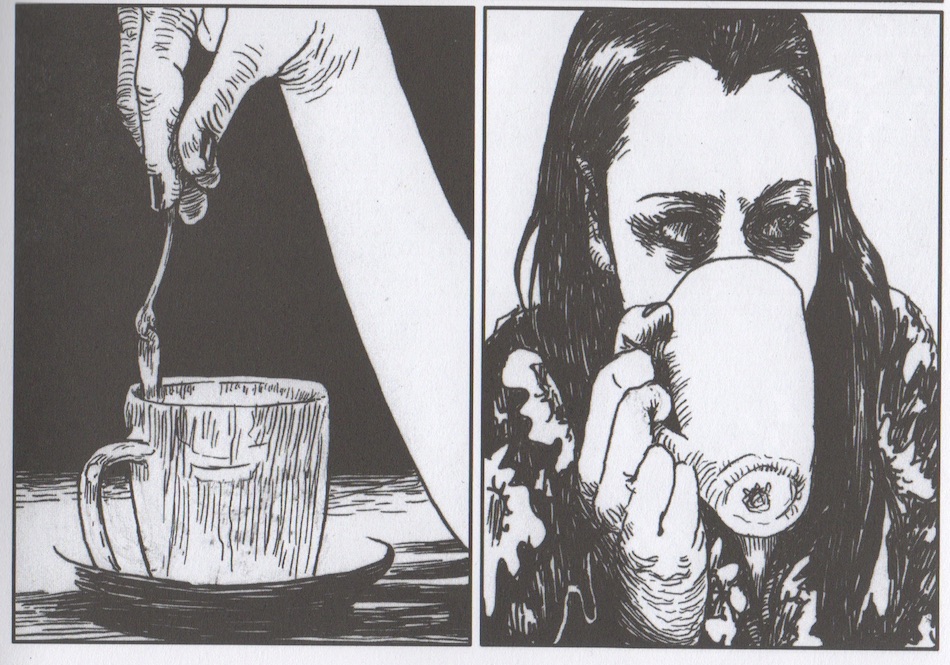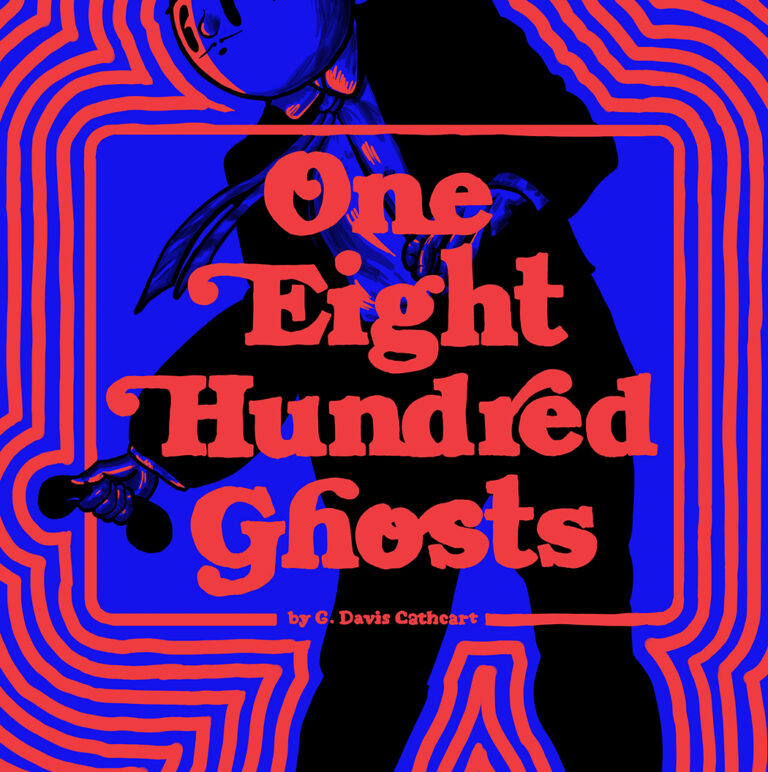Stanley Wany’s Helem arrived in my hands unexpectedly, a complete surprise from an artist I’d never heard of before, but a quick flip-through had me realizing its similarity to something for which I’d long desired. It feels like a gift for anyone who appreciates a certain type of mainstream comics art, but wishes it were allowed to flower unhampered. It looks like if one of the better early '90s Vertigo artists discovered the books published by Frémok and realized making art comics was a higher calling than the stable paycheck offered to those that draw the X-Men. Learning that Wany drew comics in the '90s for an obscure publisher called Void, I guessed immediately the sort of sub-Caliber goth comics subsequent research would confirm they were. It is easy to see, in these drawings of a girl sinking backwards into the bath to get her hair wet or a stubbly and weathered man smoking cigs, the skillset of someone who’d send their portfolio to the editors of Hellblazer, but intervening years have made his drawing skills impeccable: capable of surrealism and brushy texture, capturing precise gestures of facial expression in gorgeous black and white - the sort of increase in power level only achievable after deciding to pursue something more interesting than being beholden to the authorial voice of British men who want to talk about the power of stories.

I see a lot of Chris Bachalo in these pages, albeit an alternate timeline version who went on to have a far more interesting career. A sequence in the desert with giant heads half-buried in the sand recalls some pretty specific Moebius imagery, but the notion that Wany is following in Moebius’ footsteps comes more from the sense that he is placing the unconscious mind on paper with the aim of making art. There’s a Jimi Hendrix record on the turntable, recalling Bill Sienkiewicz's biography of Hendrix, which he pursued as a way of furthering his artistry - though Wany’s black and white approach is far closer to Blutch, in his strip about Sonny Sharrock and elsewhere.
The work here was originally published via an outfit called Éditions TRIP (or TRIP Comix), which Wany founded in 2010 with Marc Tessier. Helem collects two books, Agalma and Sequences, along with additional material. These comics are largely wordless. Occasional panels seem mildly distended, as if the drawings originally were drawn wider than how they’re now being printed, but I’m not sure if this is an error or just my misinterpretation of a certain lankiness to some of the figures, a length in their faces. Pages generally have a four-panel grid to them, and it’s rare for any of them to tell a strict sequence; more often, there is an element of montage happening, dragging any individual visual thread out over the course of several spreads, braided together with others. Interspersed are a few examples of what I’d call “free” drawing, busy with interlocking images and not calling particular attention to any of them. While there might be something within these images that follows a thread from a previous visual sequence, the associations between one thing and another are far looser than the counterpoint suggested in the four-panel pages’ steady rhythm.
There are a few figures you see regularly enough to identify as characters. This does not include the aliens, or a bird-headed and bewinged nude female figure, which I interpret more as flights of fancy. One of these figures is presumably named Helem, but the conventions of titling could easily be elided, as by and large the book gives zero concessions to what’s commercially pitch-worthy. There’s just enough of an emphasis on sequences that you’re not looking at someone’s sketchbook. The uncompromising quality is not to the work’s detriment.

Considering Wany’s circumstances are the opposite of what publishing generally elevates, it’s worth giving him the benefit of the doubt one normally extends to more established artists. Image Comics recently released the first two issues of the series Echolands, fronted by J.H. Williams III, an artist surely in the 'weeping for there were no lands left to conquer' phase of his career, having moved from one triumphant moneymaking peak to another over the past 20 years. For all the fun presented by seeing such a powerful talent drawing what they want, the series still has the faint air of a bummer about the 'guy whose day job is working in video games is credited as co-writer' aspect of it all. I don’t mean to insult that comic so much as I wish to acknowledge that Helem, despite its narrative being one I can’t begin to make sense of or describe at all, offers extremely similar pleasures.








